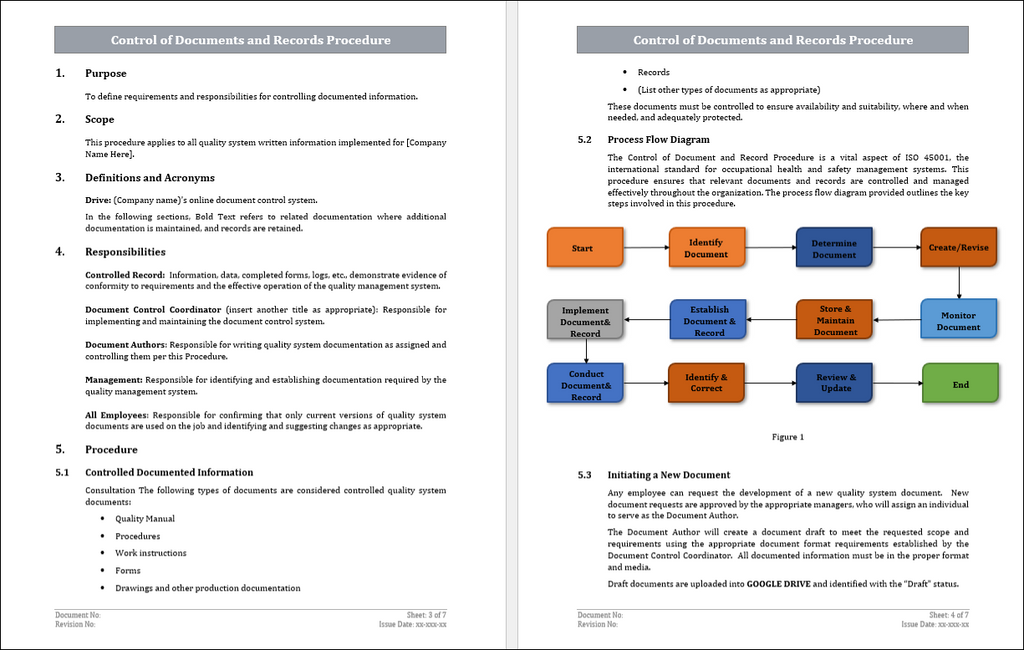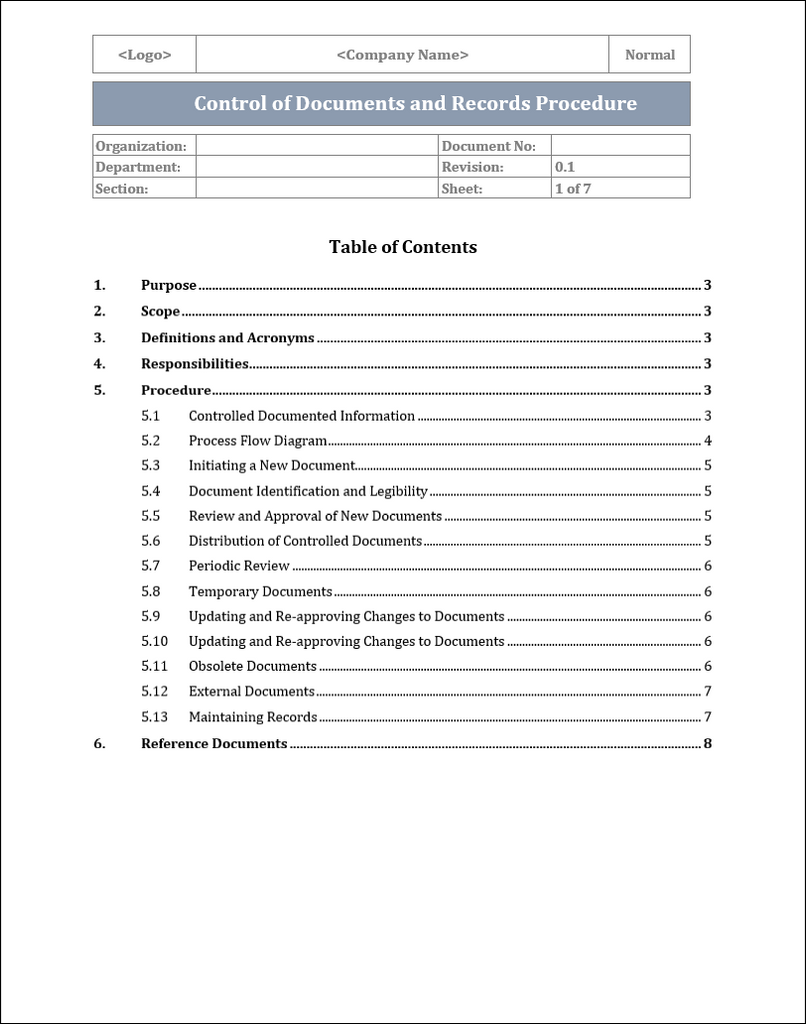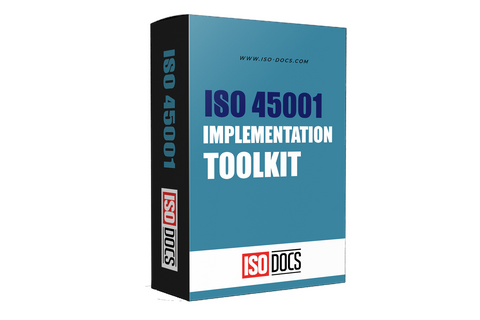ISO 45001 Control Of Documents And Records Procedure Template
Introduction
In occupational health and safety management, adhering to strict procedures for controlling documents and records is crucial for maintaining compliance with international standards such as ISO 45001. Having a well-structured and organized system in place not only ensures that important information is readily accessible but also helps demonstrate due diligence during audits. To streamline this process, utilizing a standardized template specifically tailored to the requirements of ISO 45001 is immensely beneficial. This blog will delve into the intricacies of the Control of Documents and Records Procedure to ISO 45001 Template and how it can enhance efficiency and effectiveness in your organization.

Importance Of Document And Records Control In ISO 45001
Document and records control is a crucial aspect of ISO Document, and records control is a critical aspect of ISO 45001, the international standard for occupational health and safety management systems. This process involves determining the necessary documentation to ensure the effective planning, operation, and control of an organization's health and safety management system.
By implementing document and records control, organizations can ensure that all relevant information is accurate, up-to-date, and easily accessible to employees. This helps to ensure that all stakeholders have access to the necessary information to carry out their roles effectively and safely.
Furthermore, document and records control helps to ensure compliance with legal and regulatory requirements by providing a systematic approach to document management. By maintaining accurate records of activities and processes, organizations can demonstrate their commitment to health and safety management and show evidence of compliance with relevant standards.
Ensuring Compliance With ISO 45001 Through Document And Records Control
1. ISO 45001 is an international standard for occupational health and safety management systems. Organizations must establish and maintain effective document and records control procedures to ensure compliance with this standard.
2. Document control involves creating, approving, distributing, and revising documents related to the occupational health and safety management system. This includes policies, procedures, work instructions, forms, and other documents necessary for the organization to operate per ISO 45001 requirements.
3. On the other hand, records control involves ensuring that records related to occupational health and safety are identified, collected, indexed, stored, maintained, and disposed of properly. These records may include incident reports, training records, risk assessments, and other documentation demonstrating the organization's compliance with ISO 45001.
4. Effective document and records control is essential for demonstrating compliance with ISO 45001. Organizations must ensure that all relevant documents are up to date, accessible to those who need them, and properly maintained. Records must also be retained for the appropriate length of time as required by the standard.
5. Organizations should establish clear procedures and responsibilities for document and record management to implement effective document and records control, train employees on these procedures, and regularly review and update documentation as needed. This will help ensure that the organization maintains compliance with ISO 45001 and continuously improves its occupational health and safety management system.
Implementation Of Document And Records Control
Document and records control is critical to any organization's quality management system. It involves the management of all documents and records within an organization to ensure their accuracy, integrity, and accessibility. The following are some critical steps to implement effective document and records control in an organization:
1. Establish A Document And Records Control Policy: The first step in implementing document and records control is to develop a policy that outlines the organization's requirements and guidelines for managing documents and records. This policy should be communicated to all employees and stakeholders to ensure everyone knows their responsibilities.
2. Identify Document And Record Requirements: Identify all the documents and records required for the organization to operate effectively. This may include regulatory requirements, standard operating procedures, work instructions, forms, templates, and other essential organizational process documents.
3. Create A Document And Records Management System: Establish a centralized system for managing all documents and records within the organization. This system should include clear procedures for creating, reviewing, approving, distributing, and storing documents and records. It should also include controls for document revision, version control, and document retention.
4. Train Employees On Document And Records Control: Provide employees with training on the organization's document and records control policies and procedures. This training should include information on how to create and manage documents, access and retrieve records, and ensure the accuracy and integrity of documents and records.
5. Implement Document Control: Procedures for controlling documents and records, including document numbering, document naming conventions, document approval processes, and document distribution. Ensure that all employees follow these procedures to maintain the accuracy and integrity of documents and records.
6. Monitor And Review Document And Records Control Processes: Regularly monitor and review the organization's document and records control processes to ensure they are effective and compliant with regulatory requirements. This may include conducting internal audits, reviewing document and record management metrics, and soliciting employee feedback.
7. Continuously Improve Document And Records Control Processes: Seek opportunities to improve the organization's document and records control processes. This may include implementing new technologies or software tools, streamlining document approval processes, or enhancing employee training programs.
Conclusion
In summary, implementing a Control of Documents and Records Procedure by ISO 45001 is essential for maintaining a systematic approach to document management. This template provides a structured framework to ensure compliance with regulatory requirements and maintain accurate records. By utilizing this template, organizations can streamline their operations, improve efficiency, and demonstrate their commitment to continuous improvement in occupational health and safety practices.


